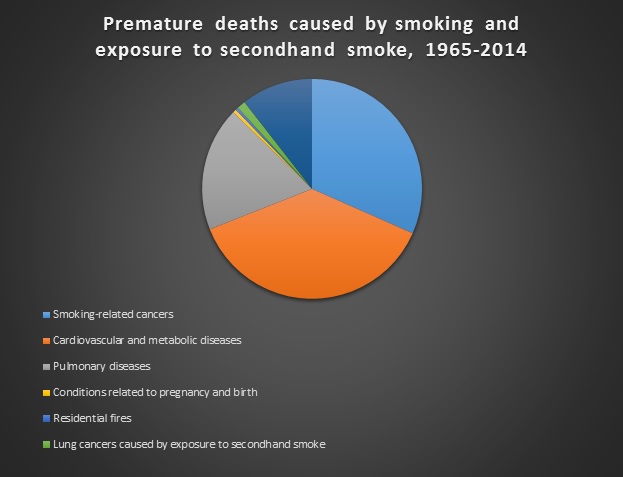Smoking Report: Why 'Lighting Up' Causes So Many Diseases

Fifty years after the first U.S. Surgeon General's report in 1964 warned about the link between smoking and lung cancer, research continues to identify more diseases that are directly caused by smoking.
Now, liver and colorectal cancers have been added to the list of cancers for which there's sufficient data to infer smoking is not merely linked to but actually can cause the diseases, according to the newest Surgeon General's report released today (Jan 17).
Cigarette smoke contains thousands of compounds, including 69 known to be carcinogens, chemicals that are directly involved in causing cancer. Carcinogens can result in tumors by damaging the genome or disrupting the cell's metabolic processes.
Smoking is responsible for more than 90 percent of lung cancers. But traces of tobacco carcinogens have been found in other organs as well. For example, pieces of DNA bound to carcinogens have been found in breast tissue and breast milk, according to the report authors, who reviewed new research over the recent years. [Never too Late: 5 Bad Habits You Can Still Quit]
"These carcinogens are absorbed systemically. They don't just stay in the lungs. They are carried through the blood to many organs," said Stanton Glantz, director of the Center for Tobacco Control Research and Education at the University of California at San Francisco, who was not involved in compiling the report.
In colorectal cancer, tumors often originate in the glands and the cells that cover the inside of the bowel. Carcinogens in tobacco smoke can reach the large bowel through the blood supply and disrupt regular functioning of the cells. These cells then might form polyps, which can progress into malignant, or cancerous, tumors.
Reviewing large previous studies, the researchers found an increased risk of colon and rectal cancer, particularly after smoking for two or more decades. In some studies, smokers were up to twice as likely to develop colorectal cancer as nonsmokers.
Get the world’s most fascinating discoveries delivered straight to your inbox.
The report authors also looked at other cancers such as prostate cancer and concluded that smoking is not a cause for this type of cancer, although it increases risks of dying for those diagnosed with prostate cancer.
Examining breast cancer, the researchers concluded the evidence suggests smoking can cause the disease.
"Even a finding that is 'suggestive,' is a pretty strong finding," Glantz told LiveScience. "If I give a glass filled with clear liquid and say, this might give you breast cancer but I'm not absolutely positive, I don't think you want to drink the liquid."
Other new entries in the official list of smoking-caused diseases include Type 2 diabetes, rheumatoid arthritis, erectile dysfunction, macular degeneration that can blind older people, and cleft palate birth defects.
"In addition to carcinogens in the cigarette smoke, there's a lot of inflammatory agents," Glantz said. Smoking causes these diseases partly "by triggering inflammatory processes and increasing the general inflammatory environment."
Looking over the past 50 years of the war on smoking, the report authors warned that the disease risks from smoking by women have risen sharply and are now equal to those of men for lung cancer, and pulmonary and heart diseases.
Since the landmark 1964 report, nearly 21 million people have died prematurely because of smoking or exposure to secondhand smoke, according to the report.
Heart and metabolic diseases attributed to smoking accounted for 40 percent of tobacco-related deaths, the report revealed.
"This is very important. When people think about smoking they usually just think cancer. Most people don't really appreciate how big the risks of heart diseases are," Glantz said.
The anti-smoking movement has had achievements too, the report authors noted. Today fewer than 20 percent of Americans smoke, down from 42 percent in 1964. Tobacco advertising has been banned from TV and 26 U.S. states and the District of Columbia have enacted laws prohibiting smoking in all indoor public areas.
Email Bahar Gholipour. Follow us @LiveScience, Facebook & Google+. Original article on Live Science.




